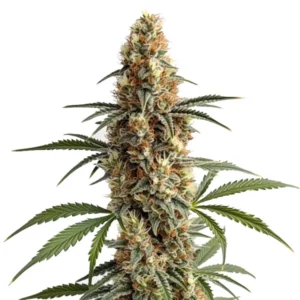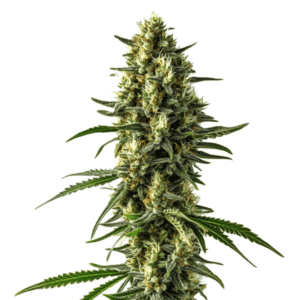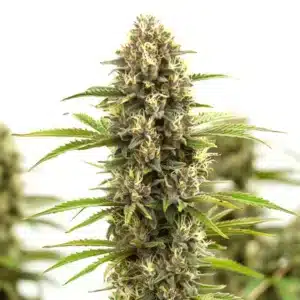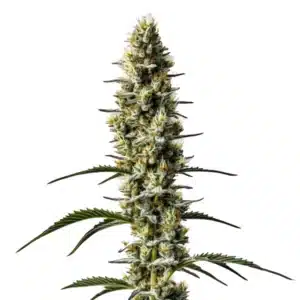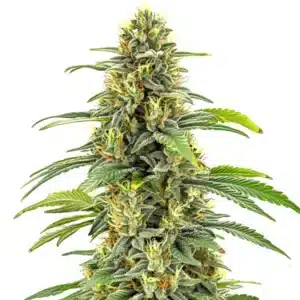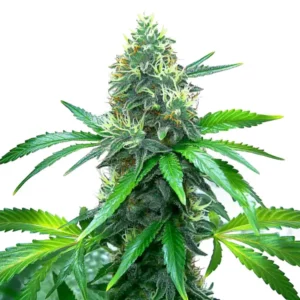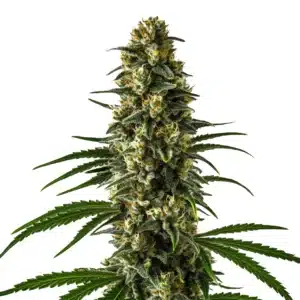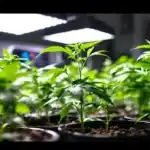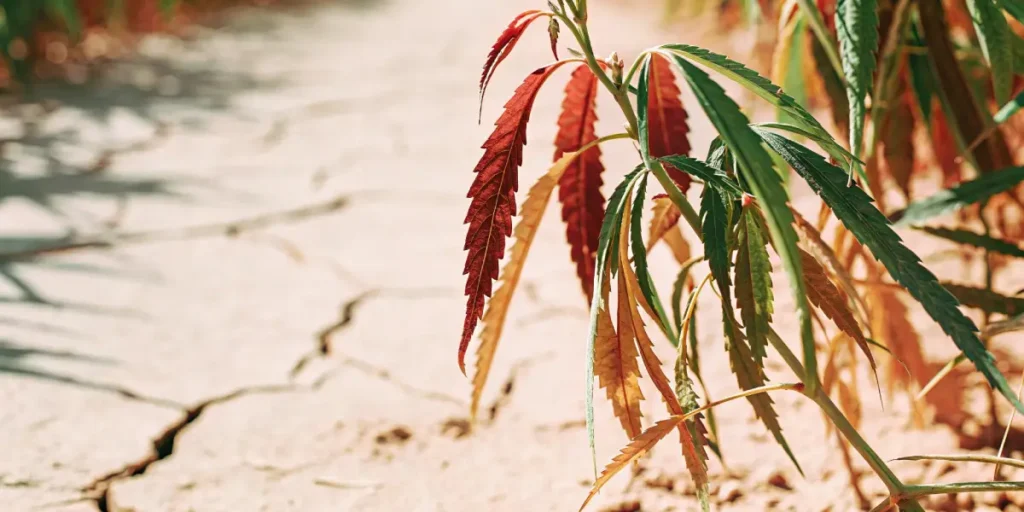
Cannabis Hormone Response Under Drought
Cannabis plants have an incredible ability to adapt to various environmental challenges. One of the most common stressors they face is drought. When water becomes scarce, cannabis plants undergo a series of hormonal changes to survive. These changes can affect growth, yield, and potency, making it important for growers to understand the cannabis hormone response under drought.
When drought conditions occur, cannabis plants trigger hormonal responses to conserve water and protect vital tissues. This includes producing hormones like abscisic acid (ABA), which helps the plant close its stomata. Stomata are tiny openings on leaves that allow for gas exchange. By closing them, the plant reduces water loss. However, this also limits CO2 intake, potentially affecting photosynthesis and growth.
Recommended Strains
Mamba Negra
|
|
THC | 18% (Medium) |
|
|
Type | Feminized |
|
|
Yield | High |
|
|
Phenotype | 55% Indica / 45% Sativa |
Mamba Negra CBD Auto
|
|
CBD | 5% (Low) |
|
|
Type | CBD Autoflowering |
|
|
Yield | High |
|
|
Phenotype | 80% Indica / 20% Sativa |
Growers should be aware of different cannabis strains that handle drought stress more efficiently. For instance, Blimburn Seeds offers strains like Mamba Negra, which is known for its resilience in challenging conditions. Selecting the right strain can make all the difference when it comes to managing cannabis hormone response under drought.
Cannabis Drought Stress Hormone Interaction
The interaction between various hormones during drought is a complex process. As the plant detects lower water availability, it shifts its hormonal balance to adapt. Auxins, which promote cell elongation, are reduced, while abscisic acid levels rise. This hormonal shift helps the plant conserve energy and resources, focusing on survival rather than growth.
Another key player in cannabis drought stress hormone interaction is cytokinins. These hormones usually promote cell division and growth but decrease during drought to slow down plant metabolism. By knowing these interactions, growers can better anticipate how their plants will react and adjust their care strategies accordingly.
The cannabis drought stress hormone interaction is pivotal for the plant’s adaptation. During drought, the plant’s ability to fine-tune its hormonal responses determines its resilience and growth sustainability. By modulating hormone levels, cannabis plants can prioritize essential functions, ensuring their survival until more favorable conditions return.
Additionally, the cannabis plant hormone changes during drought can play a significant role in how the plant allocates its resources. Instead of investing in new growth, the plant may focus on strengthening existing structures and enhancing root systems. This strategic resource management is crucial for long-term survival and maintaining plant health.
Practical Tips for Managing Drought Stress
To manage the effects of drought on cannabis hormone levels, consider implementing a few practical strategies. First, ensure adequate soil moisture by using mulches or ground covers to reduce evaporation. This helps maintain a more stable environment for root systems.
Another useful technique is the use of drip irrigation systems. These systems deliver water directly to the roots, minimizing waste and ensuring your plants receive what they need. Coupled with selecting drought-resistant strains like Bruce Banner 3 from Blimburn Seeds, these methods can enhance your garden’s resilience.
Monitoring environmental conditions is critical to managing cannabis hormone response under drought. Using sensors to track soil moisture and atmospheric humidity can help growers make informed decisions about watering schedules. This proactive approach can prevent overwatering, which is also detrimental.
Furthermore, incorporating organic mulches not only conserves moisture but also enriches the soil. As these mulches decompose, they provide nutrients that support a healthy microbial environment, further aiding the plant’s ability to withstand drought conditions and hormonal shifts.
Promos & Deals
Effects of Drought on Cannabis Hormone Levels
The effects of drought on cannabis hormone levels can vary based on several factors, including plant age and environmental conditions. Young plants may be more sensitive to hormonal shifts, impacting their development and future yield. Older plants might withstand these changes better but could still experience reduced growth.
One notable effect of hormonal changes during drought is the potential alteration in cannabinoid production. Stress-induced shifts can lead to increased levels of THC or CBD, depending on the strain. For growers, this means that managing drought stress can also influence the quality and potency of the final product.
Understanding the effects of drought on cannabis hormone levels is essential for optimizing yield and quality. Hormonal adjustments can affect flowering times, with some plants accelerating their reproductive cycles in response to stress, potentially leading to earlier harvests.
Moreover, the hormonal response in cannabis under drought conditions might also impact secondary metabolism. This includes the production of terpenes, which contribute to the plant’s aroma and potential therapeutic properties. Growers keen on maintaining terpene profiles need to carefully balance stress and care strategies.
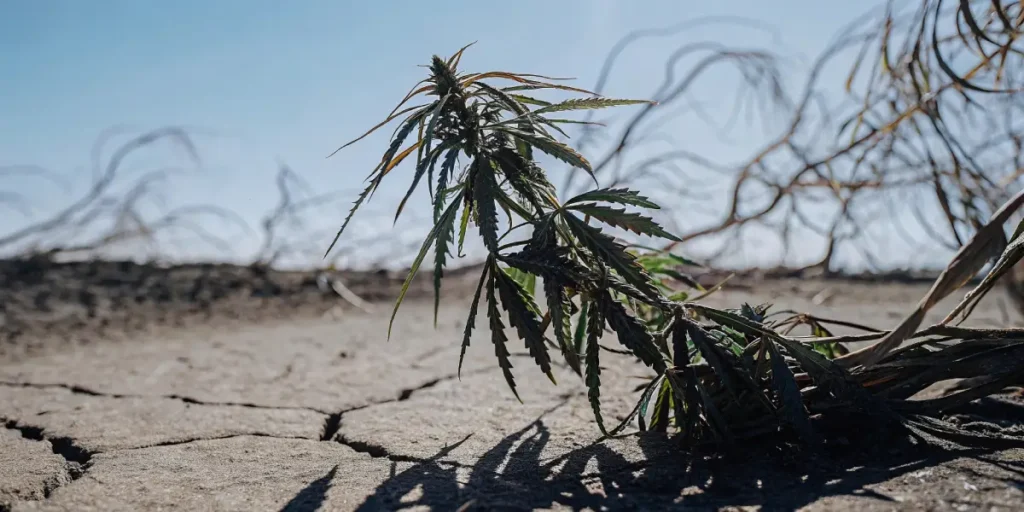
Choosing the Right Strain
When selecting cannabis strains to withstand drought, consider those with a proven track record of resilience. For instance, Gelato from Blimburn Seeds is known for its adaptability and strong genetic background. This strain can be an excellent choice for growers facing arid conditions.
Strains that naturally produce higher levels of abscisic acid can be advantageous. These plants may close their stomata more effectively, conserving water and adapting quickly to stress. Consult with seed providers or fellow growers to find strains that match your specific environmental challenges.
Experimenting with different strains allows growers to observe varied cannabis plant hormone changes during drought. This experimentation can reveal which genetic traits contribute to better drought resilience, aiding in future strain selection.
Besides to genetic considerations, growers should factor in their specific growing conditions when choosing strains. Local climate, soil type, and available resources all play a role in determining which strains will thrive under drought stress, ensuring a successful cannabis hormone response under drought.
Hormonal Response in Cannabis Under Drought Conditions
During drought conditions, cannabis plants rely heavily on their hormonal response to survive. The hormonal response in cannabis under drought conditions includes not only abscisic acid but also other plant hormones such as gibberellins and ethylene. These hormones work together to manage growth and stress responses.
Gibberellins, typically responsible for promoting growth, may decrease during drought, allowing the plant to focus on survival. Ethylene, on the other hand, can increase, promoting leaf senescence and reducing water loss. This complex interaction helps the plant cope with limited resources.
The hormonal response in cannabis under drought conditions also involves a delicate balance between stress resistance and growth promotion. By modulating hormone levels, the plant can strategically prioritize functions that enhance its chances of survival.
Furthermore, understanding this hormonal response allows growers to tailor their cultivation practices. By recognizing the signs of hormonal shifts, they can adjust environmental factors such as light exposure and nutrient availability to better support the plant’s needs during drought.
Adapting Your Growing Techniques
To support hormonal response in cannabis under drought conditions, adjust your growing techniques accordingly. Focus on soil health, as healthy soil can retain moisture better and support root development. Incorporate organic matter and consider using soil amendments like biochar to improve water retention.
Additionally, consider the microclimate of your growing area. Providing windbreaks or shade can reduce stress on plants during peak heat. This small adjustment can significantly impact the hormonal balance and overall health of your cannabis plants.
Adjusting nutrient regimens is also crucial when adapting growing techniques during drought. Nitrogen levels may need to be reduced, as excessive nitrogen can exacerbate water stress. Balanced nutrition supports a stable hormonal response in cannabis under drought conditions.
Moreover, adopting a holistic approach to plant care, including pest and disease management, is vital. Stress from pests can exacerbate drought-induced hormonal shifts in cannabis, so maintaining plant health is key to resilience.
Drought-Induced Hormonal Shifts in Cannabis
Drought-induced hormonal shifts in cannabis are not just about survival; they can also influence the plant’s overall health and productivity. These shifts can lead to changes in flowering times, bud development, and even pest resistance. By understanding these changes, growers can optimize their strategies for better yields.
Shifts in hormone levels can result in earlier flowering as the plant attempts to reproduce before conditions worsen. This can be beneficial for some growers looking to harvest early, but it may also lead to smaller yields if not managed properly. Adjusting nutrient and water schedules accordingly can help mitigate these effects.
Drought-induced hormonal shifts in cannabis can also affect the plant’s secondary metabolites. The production of flavonoids and other phenolic compounds might increase as part of the plant’s defense mechanism, potentially altering the plant’s flavor and aroma profile.
Furthermore, these hormonal shifts can influence root architecture. Enhanced root growth may occur as the plant seeks to maximize water uptake from the soil. Knowing these changes allows growers to better manage root health and support overall plant resilience.
Real-Life Examples of Drought Management
Consider a grower in a region prone to drought. By selecting a drought-resistant strain like Mamba Negra from Blimburn Seeds and implementing water-saving techniques, they successfully navigate a dry season. The grower notices that the hormonal shifts result in slightly smaller plants but with higher potency buds, a trade-off that suits their goals.
Another example could be an indoor grower experimenting with controlled drought conditions to enhance certain cannabinoid profiles. By carefully monitoring hormonal responses and adjusting environmental controls, they achieve a unique product that stands out in the market.
In regions where water scarcity is a chronic issue, growers have turned to innovative strategies that exploit cannabis drought stress hormone interaction. For instance, using precision agriculture techniques, they can fine-tune water and nutrient delivery to optimize plant health and yield.
These real-life examples of drought management highlight the importance of knowing cannabis hormone response under drought. By leveraging knowledge of hormonal interactions and environmental controls, growers can enhance productivity and plant quality even under challenging conditions.
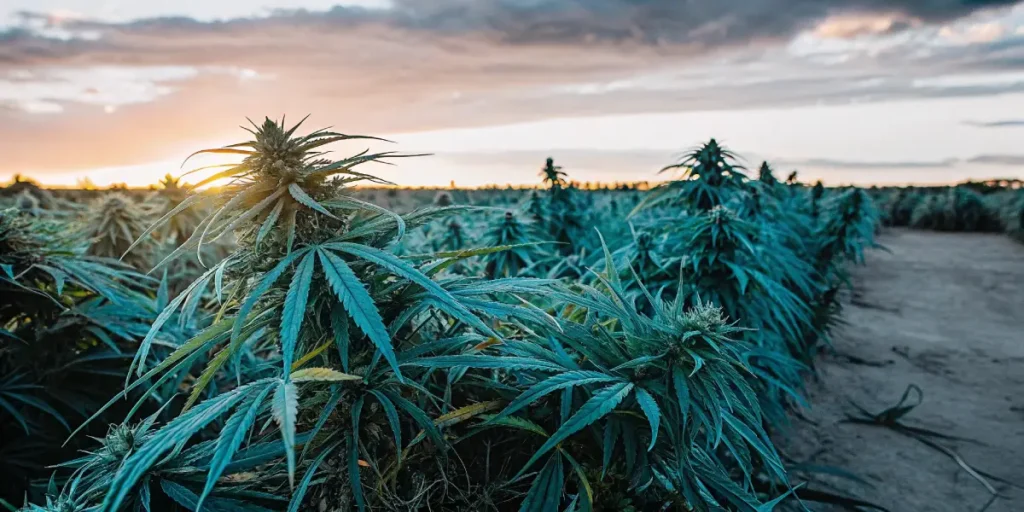
FAQs on Cannabis Hormone Response Under Drought
How does drought affect cannabis growth?
Drought affects cannabis growth by triggering hormonal changes that prioritize survival over expansion. This can lead to slower growth rates, smaller leaves, and reduced overall biomass. However, by managing these conditions carefully, growers can still achieve successful harvests.
Experienced growers often adjust their watering schedules and use drought-resistant strains to cope with these challenges. By doing so, they can maintain healthy plants even in less-than-ideal water conditions.
Through careful observation and adaptation, growers can mitigate the effects of drought on cannabis growth. Ensuring that plants receive adequate nutrients and protection from excessive heat can help maintain stability in growth patterns.
Moreover, knowing the cannabis hormone response under drought enables growers to anticipate potential growth changes. By tracking plant development and adjusting care strategies, growers can optimize conditions to support healthy plant growth despite water limitations.
What are the main hormones involved in drought response?
The main hormones involved in drought response include abscisic acid, gibberellins, cytokinins, and ethylene. Abscisic acid is crucial for reducing water loss by closing stomata. Gibberellins and cytokinins decrease to slow growth, while ethylene may increase to facilitate stress adaptation.
Knowing these hormonal changes can help growers make informed decisions about strain selection and cultivation techniques. By leveraging this knowledge, growers can better prepare for and manage drought conditions.
Each hormone plays a distinct role in the cannabis drought stress hormone interaction. While abscisic acid is the primary hormone for drought response, the interplay with gibberellins and cytokinins balances growth and stress management.
Additionally, recognizing the function of ethylene in drought response can aid in anticipating changes in plant physiology. By tailoring cultivation practices to align with these hormonal shifts, growers can enhance plant resilience and productivity.
Can drought conditions increase THC levels?
Drought conditions can sometimes increase THC levels due to stress-induced hormonal changes. This is not guaranteed and varies by strain and growing conditions. Some growers experiment with controlled drought to enhance cannabinoid profiles, but this requires careful monitoring and experience.
It’s essential to balance the potential benefits with the risks of reduced yield or plant health. Consulting with experienced growers and experimenting with small batches can help determine the best approach for your specific situation.
While some strains may show increased THC levels under drought, the effects of drought on cannabis hormone levels are complex and multifaceted. Growers should weigh the potential for enhanced potency against the risk of compromised plant health.
Careful experimentation and data collection can provide insights into how specific strains react to drought-induced hormonal shifts in cannabis. These findings can inform future cultivation strategies aimed at optimizing both yield and cannabinoid content.
How can I tell if my cannabis plants are stressed by drought?
Signs of drought stress in cannabis plants include wilting, yellowing leaves, and stunted growth. If you notice these symptoms, it’s important to assess your watering schedule and environmental conditions to determine if drought is the cause.
Regular monitoring and keeping detailed records can help identify patterns and potential stressors. By catching these signs early, you can adjust your care strategies to minimize the impacts of drought stress on your plants.
Observing changes in leaf color and texture can also indicate cannabis hormone response under drought. Dull or brittle leaves might suggest reduced water uptake and hormonal shifts targeting conservation.
Additionally, using technology such as infrared thermometers to monitor leaf temperature can provide further insights. Elevated leaf temperatures might indicate closed stomata and a subsequent hormonal response to drought stress.
What are some drought-resistant cannabis strains?
Some drought-resistant cannabis strains include Mamba Negra, Bruce Banner, and Gelato, all available from Blimburn Seeds. These strains have been bred for resilience and can perform well under challenging conditions.
Choosing the right strain is a critical step in preparing for drought. By selecting strains known for their adaptability, you can increase your chances of a successful harvest even in less-than-ideal water conditions.
Besides to their resilience, these strains often exhibit favorable cannabis plant hormone changes during drought, maintaining a balance between growth and stress response to optimize survival.
Consulting with other growers and seed banks can provide valuable insights into which strains have demonstrated success in similar climates. This collaboration can enhance strain selection and overall garden performance.


